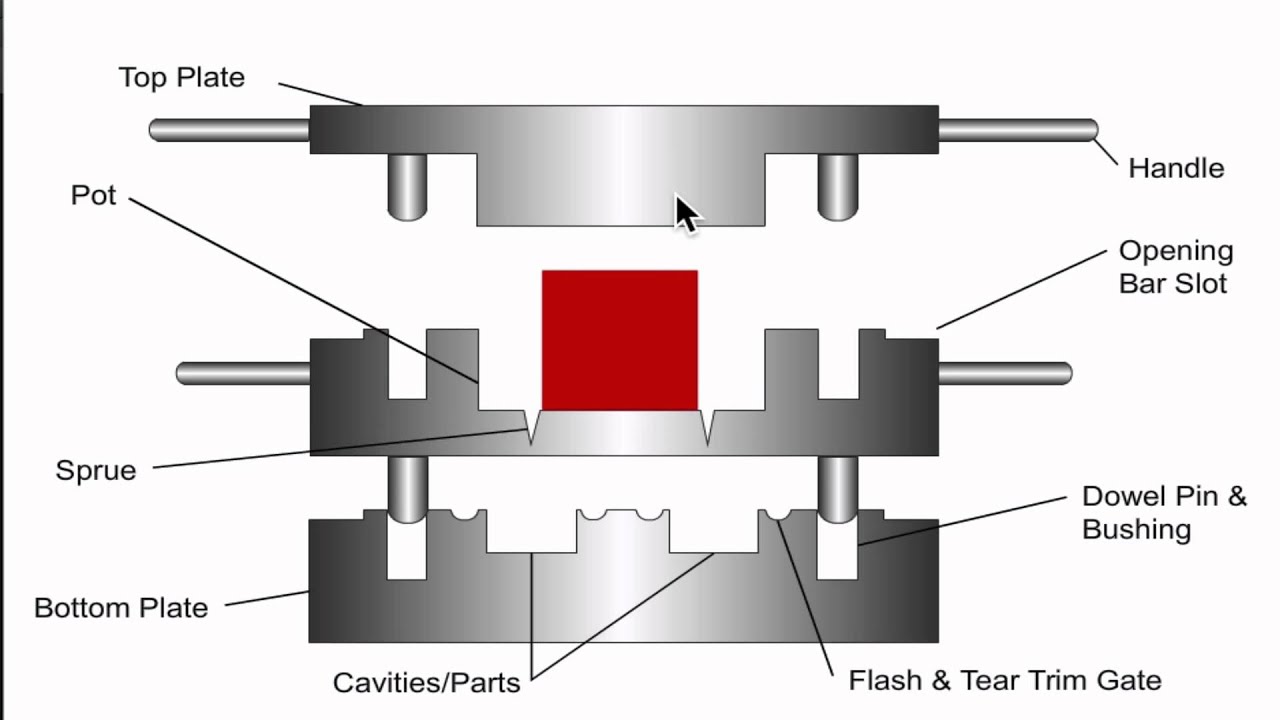Rubber Transfer Molding
Rubber transfer molding, also known as Transfer compression molding.
Silicone transfer molding, it is ideal for producing solid silicone rubber parts, rubber part inserts, and parts that require bonding rubber to metal. Rubber transfer molding combines the advantages of rubber injection molding and rubber compression molding. Transfer molding begins by measuring the molding material and placing this uncured silicone rubber in a "pot" that is part of the mold. The mlid is then closeed and plunger compresses the material (usually, it's a three-plate die tool, but it doesn't end at 3-plate, it can be 4 or 5). As heat is applied, pressure forces or "transfers" the uncured rubber through sprues into the moid’s cvities,giving this molding process its name.

How does rubber transfer molding work?
The steps to complete the rubber transfer molding process are as follows.
Make mold tools - prepare steel material, complete product and mold design.
Prepare raw materials - choose the type of material you want to use and calculate the proper amount of material. If use too much material, the excess material will seep out of the cavity, resulting in large flashes that would be difficult to remove.
Set up the machine Parameters - Once the mold is ready, it can be ready for sampling to ensure the size and surface of the part is what we required, we need to be set the machine parameters and heat up the mold.
Place a piece of uncured rubber into one part of the mold.
The mold is closed upwards, and under the hydraulic pressure, the rubber is forced into the cavity through a small hole. The mold remains closed while the rubber cures.
The plunger is rised up and the transfer pad material is removed.
Open the mold and the part can be taken out. During this time, any flash will be trimmed and removed. (Trimming flash, a secondary process that romoves unwanted extra overflow material called flash.)
Rubber transfer molding advantages
Less flash: Compared to compression moldings,the transfer molded parts inherently have less flash point (excess material that runs along the parting line of the moid) because the mold remains closed when the material enters the mold cavity.
Design flexibility, diversity and inclusion: Transfer molding allows for sharper edges. Micro grind vents reduce the need for overflows allowing for near flash less parts, greatly reducing deflash process or allow flash limits to directly ship parts. With pot and plunger design, simplified preforms required allowing for standardization and lower cost.
Multi-cavity mold: Transfer molded silicone rubber products require few and simple prepared material. One prepared material can fill many cavities. Compare with silicone compression molding, it is an advantage and can save a significant amount of time in the molding process, which is also an advantage over injection molding since there is not a runner to fill each cavity.
Allows for different insert materials: One of the key advantages of transfer molding over compression molding is that different inserts, such as metal parts, plastic chips, dry composite fibers, ceramics, etc., can be placed/positioned in the mold cavity before the material is injected into the cavity. This ability makes transform molding the leading manufacturing process for integrated circuit packaging and electronic components with molded terminals, pins, studs, connectors, and so on.
Short production cycle: Silicone Rubber Transfer molding offers shorter cycle times than compression molding and can also provide more consistency. The process allows for tighter tolerances and more intricate parts.
Rubber transfer molding disadvantages
However, transfer molding still produces more waste material than compression molding because of the sprue, the air holes and the overflow grooves that are often needed to allow air to escape and material to overflow.
Silicone Transfer Molding Mold is more expensive than compression mold, so tooling investment can be somewhat higher.
Transfer Molding has Slower production cycle than an LSR injection tool, sometimes limiting the overall production rate, as changeover times can be somewhat extended.
